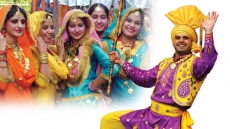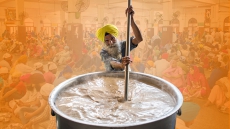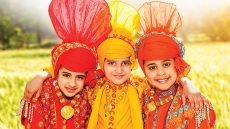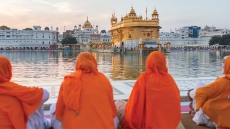Tucked away in Karnataka's Shimoga district, Mattur holds the unique distinction of being the only village in the country to still converse in Sanskrit.
Sanskar Bharati, a school in the village that imparts the knowledge of Sanskrit to the 5000 odd people, attempts to preserve this ancient language in the modern times.
"Here the children start studying the Vedas at the age of 10 and each student of this village speaks Sanskrit fluently. Sanskrit phrases such as Kaatham Asthi (How are you?), Aaham Gachami (I am going) and Shubham Bhavatu (May all good happen to me) are heard quite often," said Subraha, a local resident.
Although the villagers converse in the local dialect, most of them can speak Sanskrit fluently.
"Not everyone speaks Sanskrit all the time. But it is easier for people from around the country to learn Sanskrit. This is because most of the languages in India are derived from Sanskrit itself," said Shashank, a resident of the village who also happens to be an IT professional.
Till the early 1980s, Sanskrit was considered the language of the upper caste Brahmins. It was then that the priest of the local religious centre asked residents to adopt Sanskrit as their native language. At present, the village's population is around 3,000, with 600 Brahmins among them. In all, the Sanketi population in the country is 30,000-40,000.
Sanskrit is the common language on the streets -- from the vegetable vendor to priest, everyone speaks the ancient language. The younger generation wears jeans, T-shirts and rides hi-tech bikes, but when they speak, it's in Sanskrit. That does not mean Mattur is detached from the modern world. Almost every house in this village has an IT professional, with many of them employed abroad.
On a related note, in order to preserve this ancient language, the central government last year added Sanskrit as a choice of the third language apart from German in Central Board of Secondary Education (CBSE).





